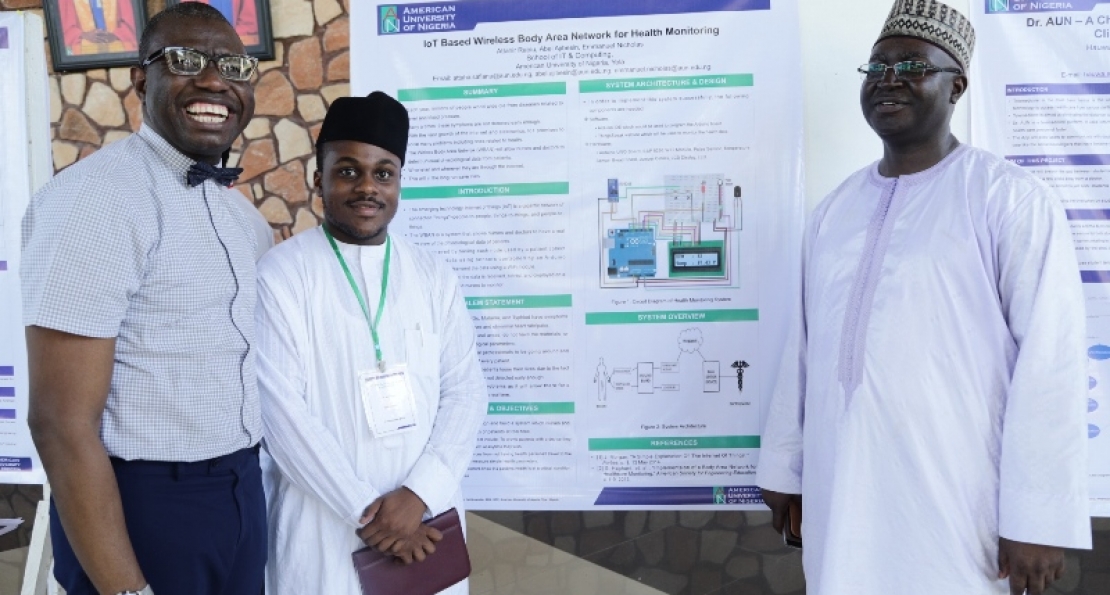Telecommunications & Wireless Technologies major, Attahir Rabiu, has designed a health monitoring device that enables patients measure their vital health statistics such as blood pressure, pulse, and body temperature.
He calls his design "IoT-based Wireless Body Area Network for Health Monitoring". Architecturally, the system is implemented using soft and hardware components which include Arduino IDE, ThingsSpeak website, Arduino UNO Board, ESP8266 Wi-Fi Module, pulse sensor, temperature sensor, jumper cables, LCD and LED displays.
The model was presented at SITC's Senior Poster Design Project (SDP) exhibition in the fall semester. Associate Professor Abubakar Sadiq Hussaini coordinates the exhibition.
Mr. Rabiu said millions of people, all over the world are dying from diseases that relate to fever and blood pressure because these symptoms lack early detection. He said many diseases such as CVDs, malaria, and typhoid share symptoms related to high body temperature and abnormal heart rate/pulse. The shortage of health workers, especially in rural areas, also contributes to a high death rate. These and more are what motivated the telecoms major to develop a system that allows doctors and nurses to monitor the health of patients in real-time.
With the vast growth of technology and the evolution of the internet and electronics, Attahir says his program will solve many health problems. The WBAN is designed in such a way that doctors and nurses get a real-time view of the physiological data of patients. This is achieved by having each node used by patients to collect data using sensors controlled by an Arduino microcontroller which then transmits the data using a Wi-Fi module for doctors and nurses to receive, store and display for monitoring.
The graduating senior believes that his design will be a breakthrough for health providers and people because of the convenience it offers. With the WBAN, patients can monitor their health parameters from wherever they are and send to their doctors to monitor without necessarily having a face-to-face meeting.
He is also confident it will encourage people to pay more attention to their health by monitoring their temperatures and pulse regularly.
Most importantly, it will help save lives as health problems can be monitored early and solutions sought on time. The program, he said, does not require a large sum of money to design, hence it is affordable.
Reported by Grace Togor Passa


